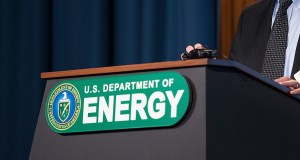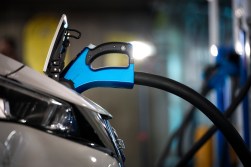Meet Aurora: The most powerful supercomputer
The Energy Department announced a $200 million contract Thursday to fund the world’s most powerful supercomputer to date.
Under the department’s Collaboration of Oak Ridge, Argonne and Lawrence Livermore National Laboratories, or CORAL, Intel Corp. will build a next-generation supercomputer, known as Aurora, that will be 18 times faster than its predecessor.
Aurora will be located at Argonne National Laboratory outside Chicago and commissioned in 2018. The Energy Department expects the supercomputer, which will operate at a peak of 180 petaflops (1 petaflop equals 1 quadrillion floating point operations per second), will help with research dedicated to materials science, transportation efficiency and renewable energy.
“Argonne National Laboratory’s announcement of the Aurora supercomputer will advance low-carbon energy technologies and our fundamental understanding of the universe, while maintaining United States’ global leadership in high performance computing,” Energy Department Undersecretary for Science and Energy Lynn Orr said in a press release. “This machine – part of the Department of Energy’s CORAL initiative – will put the United States one step closer to exascale computing.”
Under CORAL, the Energy Department has spent $525 million on next-gen supercomputers. In November, the department announced new supercomputers would be built at its Oak Ridge and Lawrence Livermore national laboratories.
Intel has hired Cray Inc. as a subcontractor for the project to build Aurora on its next-generation Shasta computer. The Shasta system architecture will support multiple infrastructures and software environments, allowing for broad configuration options and future iterations of Intel processors and high-speed interconnection technology.

A comparison of specifications between the Energy Department’s Mira supercomputer and the forthcoming Aurora supercomputer. (Intel)
Intel and Cray will also deliver a second system in 2016 called Theta that will serve as a transition system between Argonne’s current system, Mira, and Aurora’s launch in 2018. Theta will provide performance of 8.5 petaflops while requiring only 1.7 megawatts of power.
“We take great pride in building powerful supercomputers for advancing scientific discovery, and through our collaboration with Intel and Argonne, we expect the Aurora system will provide the DOE user community with the most powerful supercomputer we will have ever built,” said Peter Ungaro, president and CEO of Cray, in a release.
While Aurora may lead the world in supercomputing power once it goes live, the Energy Department is not resting on its laurels. It was also announced Thursday that $10 million has been awarded to four companies — AMD, Cray, IBM and Intel — through the department’s high-performance computing research and develop program, DesignForward. While the machines coming out of the CORAL program will be five to seven times more powerful than their predecessors, Orr said the companies involved with DesignForward are being tasked with finding ways to make supercomputers 20 to 40 times more powerful than what is currently available.
“These investments are really important because the applications for high-performance computing are extremely important to the nation’s goals of scientific discovery and national security and positioning the nation for sustained technical leadership,” Orr said.
To find out more about Aurora, check out the interactive graphic below or visit Argonne National Laboratory’s website.




